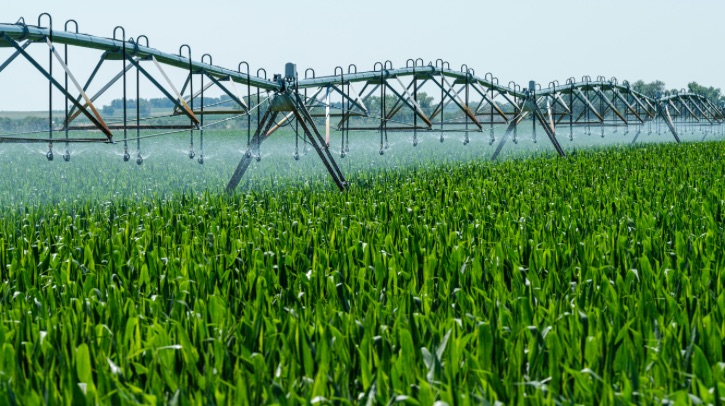A multidisciplinary team of researchers from Kansas State University, Mississippi State University, NSF NCAR, Purdue University and the University of Nebraska–Lincoln has received US$5m in funding to expedite the creation of CropSmart. CropSmart will be a mobile app and web-based application that uses a digital twin to provide the agricultural industry with individualized, data-driven recommendations at no or minimal cost.
The application is intended to make agricultural data more accessible and revolutionize the way farmers, agribusiness operators and government agricultural officials make decisions about irrigation strategies, fertilizer applications and when to harvest. Its virtual replica of the physical world can run multiple simulations to help answer questions for ‘what if’ scenarios.
From pilot to proven technology
Currently, the CropSmart team is working with farmers in Nebraska and Michigan who grow commodity crops like wheat, corn and soybeans to test CropSmart’s predictions against conventional practices. Using neighboring fields, one field acts as the control field with the farmer following traditional practices and the second field follows advice from CropSmart. Across a year, the researchers will compare how the two fields’ crop yields and economic gains differ.
CropSmart’s digital twin uses a community model called Noah-MP-Crop, which is a land surface model with crop and irrigation capabilities. Combined with high-resolution remote sensing satellite data and machine learning (ML) techniques developed by GMU, the model can create a digital copy of a farmer’s fields and deliver actionable information personalized to their farm.
While each component of CropSmart has been evaluated individually – Noah-MP-Crop has been assessed in previous studies and the ML algorithm developed by GMU has already been used to predict things like in-season crop-type mapping – this is the first time the integrated system will be tested as a whole in real-world contexts. The researchers hope that the reliability of each piece will result in successful recommendations, but anticipate that some fine-tuning will be needed to take CropSmart from a research tool to a ready-to-use product.
A site visit highlighted one of the challenges of taking a product from the lab to the real world. Before the visit, many on the team had never seen a center-pivot irrigation wheel, a sprinkler system often used to water large fields. In the Noah-MP-Crop model, irrigation worked like an on/off switch, with an entire field instantaneously being watered on demand. In reality, an irrigation wheel moves slowly across a field watering a section at a time, and it can take two to three days to water an entire field.
As a result of this site visit, the team is exploring how it can better represent agricultural irrigation practices in its model, which is something no other crop modeling system has done before.
“This project has been really exciting, but also a new experience for me because it is not just about the fundamental science, but applying it,” said Cenlin He, co-PI on CropSmart and a researcher at NSF NCAR. “It’s important to see what you are representing in a model in reality because you don’t always know what is missing from a model until you see the thing you’re modeling in real life. It’s a simple lesson, but it’s not always simple to represent that inside the model.”
Accelerating solutions
CropSmart was one of seven projects selected earlier this year to move to phase two of the US National Science Foundation Convergence Accelerator program’s Track J. The Convergence Accelerator funds teams to solve societal challenges through innovation and convergence research – a method that strives to solve complex research problems by merging expertise across diverse disciplines.
Track J is a partnership with the US Department of Agriculture (USDA) and focuses on tackling food and nutrition insecurity challenges. Being selected for phase two provides the team with US$5m in funding to expedite the process of taking the research from the idea phase to implementation.
The award from the NSF Convergence Accelerator provides the CropSmart team with three years and funding to get the platform ready for market. Additionally, the Convergence Accelerator provides mentorship, training and resources to help the team transition their idea from a prototype to a solution. This includes training in human-centered design, team science, communication, storytelling and pitching.
“The purpose of the convergence accelerator is to accelerate the transition from research to industrial production, and we are leveraging our existing tools to do this,” continued He. “A lot of the teams in Track J are building physical products, whereas we are building a digital system. We hope to do this in a way that’s really impactful and can benefit not just farmers but consumers.”
In related news, the University of Minnesota Twin Cities is to lead a new National Artificial Intelligence Research Institute, funded by a US$20m grant over five years from the National Science Foundation (NSF) and the US Department of Agriculture’s (USDA) National Institute of Food and Agriculture (NIFA). Click here to read the full story.



